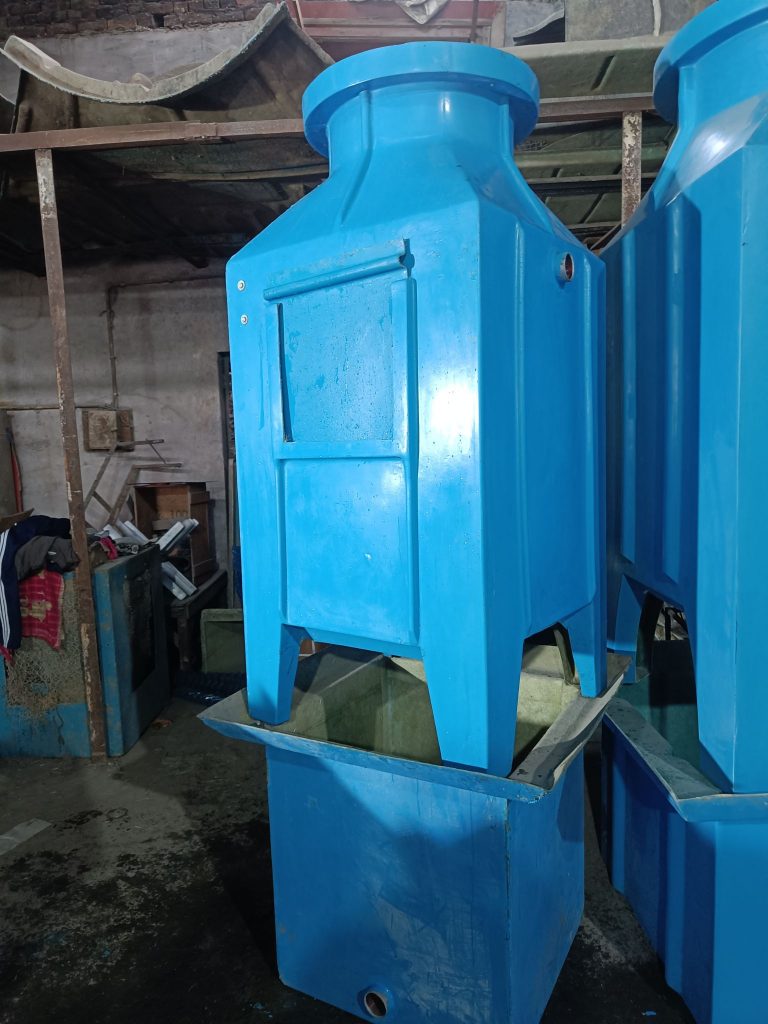Use of Cooling Towers in Refrigeration Systems
Cooling towers play a crucial role in large-scale refrigeration systems, particularly in industrial, commercial, and district cooling applications. They help reject heat absorbed by the refrigerant, improving system efficiency and reducing energy consumption. Below is a detailed breakdown of their function, types, and benefits in refrigeration systems.
1. Role of Cooling Towers in Refrigeration
In refrigeration systems, cooling towers are primarily used in water-cooled condenser systems to:
- Remove heat from the refrigerant after compression.
- Cool condenser water, which absorbs heat from the refrigerant in the condenser.
- Recycle water in a closed-loop or open-loop system, reducing water waste.
How It Works:
- Hot refrigerant gas (from the compressor) enters the condenser.
- Condenser water absorbs heat, turning the refrigerant into a liquid.
- The heated condenser water (typically 95–110°F / 35–43°C) is pumped to the cooling tower.
- The cooling tower cools the water via evaporation (wet tower) or air cooling (dry tower).
- The chilled water (now ~85–95°F / 29–35°C) returns to the condenser, repeating the cycle.
2. Types of Cooling Towers Used in Refrigeration
A. Open (Evaporative) Cooling Towers
- Most common in large refrigeration systems.
- Water is sprayed over fill media while air flows through, cooling via evaporation.
- Best for: Industrial refrigeration, cold storage, and large HVAC-R systems.
B. Closed-Circuit Cooling Towers (Fluid Coolers)
- Refrigerant or condenser water flows inside a sealed coil.
- External water spray cools the coil without mixing.
- Best for: Systems requiring clean water (e.g., food processing, pharmaceuticals).
C. Dry Cooling Towers (Air-Cooled Condensers)
- No water evaporation; uses fans and finned heat exchangers.
- Best for: Water-scarce regions or where Legionella risk is a concern.
D. Hybrid Cooling Towers
- Combines wet and dry cooling for efficiency and water savings.
- Best for: Variable-load refrigeration plants.
3. Key Benefits in Refrigeration Systems
- Higher Efficiency – Water-cooled condensers with cooling towers are more efficient than air-cooled systems, especially in hot climates.
- Lower Operating Costs – Reduces compressor workload, saving energy.
- Scalability – Supports large industrial refrigeration (e.g., cold storage, food processing).
- Water Conservation – Recirculates water instead of single-pass cooling.
4. Common Applications
- Industrial Refrigeration (Food processing, breweries, chemical plants)
- Cold Storage Warehouses (Large freezer/refrigeration plants)
- Supermarket & Retail Cooling (Centralized refrigeration systems)
- District Cooling Plants (Large-scale chilled water distribution)
- Ice Rinks & Skating Arenas (Maintaining low-temperature surfaces)
5. Challenges & Considerations
- Legionella Risk – Wet cooling towers require water treatment to prevent bacterial growth.
- Maintenance Needs – Scaling, fouling, and corrosion must be managed.
- Water Consumption – Evaporative towers lose water (~1-3% of flow rate).
- Climate Impact – Efficiency drops in high humidity (reduced evaporation).
6. Cooling Tower vs. Air-Cooled Condensers in Refrigeration
| Feature | Cooling Tower + Water-Cooled Condenser | Air-Cooled Condenser |
| Efficiency | Higher (better COP) | Lower |
| Water Use | Yes (evaporation loss) | None |
| Footprint | Larger (tower + piping) | Compact |
| Maintenance | More (water treatment needed) | Less |
| Best For | Large industrial systems | Small/medium systems |
